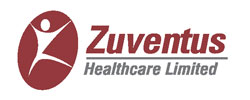Extended Producer Responsibility (EPR) for battery waste involves managing battery waste to protect the
environment and human health from potential hazards associated with substances in used batteries.
Under the Battery Waste (Management) Rules 2022, producers are required to ensure that all used
batteries are collected and sent for refurbishment or recycling, and their incineration or disposal in
open areas is prohibited. Producers can fulfill this obligation by employing recyclers or refurbishers
or authorizing other entities to handle the collection, recycling, or refurbishment of used batteries.
EPR for battery waste aims to safeguard the environment by promoting green energy and reducing reliance
on other energy sources. Given the environmental challenges posed by batteries at the end of their life
cycle and their large-scale importation, the government has introduced EPR to mandate that battery
producers and importers manage battery waste responsibly.
The Battery Waste Management Rules 2022 categorize batteries into four types:
- Automotive batteries: These are batteries designed specifically for powering
lighting, ignition systems, or automotive starters.
- Lithium-ion batteries: These are used in electric vehicles such as e-scooters,
e-bikes, and electric cars.
- Industrial batteries: These batteries power large machinery, including forklifts,
trucks, and various industrial equipment.
- Portable batteries: These batteries are used to charge devices like tablets,
smartphones, and other accessories, and are primarily found in mobile phones.
Application of Battery Waste Management Rules, 2022
These regulations apply to all types of batteries, regardless of their chemistry, shape, volume, weight,
material composition, or use. Producers (manufacturers and importers) must fulfill their Extended
Producer Responsibility (EPR) obligations by meeting collection and recycling targets for each type of
battery they place on the market. Producers of portable, automotive, industrial, and electric vehicle
batteries (including lithium-ion batteries) are required to register for EPR and comply with specific
post-compliance requirements. All parties must be aware of their new responsibilities. The Central
Pollution Control Board (CPCB) will enforce penalties for non-compliance with EPR responsibilities and
targets, while the State Pollution Control Board (SPCB) has the authority to penalize refurbishers or
recyclers who fail to meet their obligations.
Certificate for EPR for Battery Waste
To obtain a certificate for battery waste, various compliance requirements must be met. All types and quantities of batteries that are refurbished or recycled will receive certificates for waste and end-of-life batteries from registered entities. These certificates can be used to fulfill Extended Producer Responsibility (EPR) obligations. The certificates will be issued based on the weight (in kg) of battery waste that has been recycled or refurbished. They will be generated by the Central Pollution Control Board (CPCB) and provided to the appropriate recyclers or refurbishers.
Documents Required for EPR for Battery Waste
To prevent last-minute delays in paperwork required by the Central Pollution Control Board (CPCB), you can rely on searoot for assistance. The following documents are necessary:
 GST Certificate of the company
GST Certificate of the company
 PAN Card of the company
PAN Card of the company
 Corporate Identification Number (CIN) Document
Corporate Identification Number (CIN) Document
 Consent from State Pollution Control Boards (SPCBs) or Pollution Control Committees (PCCs) for Air, Water, or Hazardous Waste (if the unit operates a production facility)
Consent from State Pollution Control Boards (SPCBs) or Pollution Control Committees (PCCs) for Air, Water, or Hazardous Waste (if the unit operates a production facility)
 Import Export Certificate (for importers)
Import Export Certificate (for importers)
 District Industries Center (DIC) registration (if applicable)
District Industries Center (DIC) registration (if applicable)
Responsibilities of Producers/Manufacturers
Producers must adhere to the regulations set forth by the board under the Extended Producer Responsibility (EPR). Key responsibilities include:
 Meeting strict collection, recycling, and refurbishment targets for batteries placed on the market.
Meeting strict collection, recycling, and refurbishment targets for batteries placed on the market.
 Registering and periodically renewing their registration through the centralized online portal.
Registering and periodically renewing their registration through the centralized online portal.
 Submitting a detailed EPR action plan to the Central Pollution Control Board (CPCB), outlining the quantity, weight, and dry weight of battery components (including nickel, cobalt, lead, lithium, and other materials like plastics and paper).
Submitting a detailed EPR action plan to the Central Pollution Control Board (CPCB), outlining the quantity, weight, and dry weight of battery components (including nickel, cobalt, lead, lithium, and other materials like plastics and paper).
 Within three months of the publication of the Battery Waste Management Rules, 2022, producers must submit an EPR Plan in Form 1(C) to the CPCB for batteries produced in the fiscal year 2022-2023.
Within three months of the publication of the Battery Waste Management Rules, 2022, producers must submit an EPR Plan in Form 1(C) to the CPCB for batteries produced in the fiscal year 2022-2023.
 Battery manufacturers must use a minimum percentage of recycled materials. For imported batteries, producers must either export an equivalent amount of recycled materials or incorporate it into other business operations.
Battery manufacturers must use a minimum percentage of recycled materials. For imported batteries, producers must either export an equivalent amount of recycled materials or incorporate it into other business operations.
Filing of Application
 To obtain EPR battery waste certification, applicants must submit all required information. Our expert team will review the documentation for any inconsistencies.
To obtain EPR battery waste certification, applicants must submit all required information. Our expert team will review the documentation for any inconsistencies. Once the documents are verified, an online EPR registration application for batteries will be submitted to the CPCB authorities. The CPCB will then assess the application, and any issues or discrepancies will be addressed as needed.
Once the documents are verified, an online EPR registration application for batteries will be submitted to the CPCB authorities. The CPCB will then assess the application, and any issues or discrepancies will be addressed as needed. The certificate of authorization will be issued within 30 days of the application's submission. After receiving the certificate, producers are required to implement an EPR action plan to meet their annual EPR targets.
The certificate of authorization will be issued within 30 days of the application's submission. After receiving the certificate, producers are required to implement an EPR action plan to meet their annual EPR targets.
Processing of Application
When filing an application for EPR for battery waste, it will be processed by the CPCB, with searoot assisting you throughout the process. Here’s an overview of the steps:
- The registration application will be processed within 15 working days, during which time a decision will be made to either grant or reject the registration.
- If the application is incomplete due to missing documents or information, the applicant will be notified.
- Applications will be rejected if false or irrelevant information or documents are submitted. In such cases, the application fees will be forfeited, and a new application with the appropriate fees must be submitted.
- Once approved, the portal-generated registration certificate, signed and sealed by a Competent Authority, will be uploaded to the portal.
- The CPCB’s internal processing includes review by the Member Secretary, who will approve the issuance of the certificate.
- A new registration will be valid for five years from the date of issuance.
Renewal of Registration
- Submit the renewal application 60 days before the registration expires, along with the required documents.
- Ensure Annual Returns are filed by June 30th of the following year for the registration period; renewal applications will not be processed if these reports are missing.
- Audit report findings will be considered during the renewal process.
- The CPCB will renew the registration for five years within 15 working days of receiving all complete documents.
Cancellation of Registration
To avoid issues with documentation and compliance, searoot will help ensure that you meet the Central Pollution Control Board (CPCB) requirements. Here’s what you need to know about registration cancellation:
- Registration granted to producers or manufacturers can be cancelled or suspended if any documents submitted are found to be false.
- The CPCB may suspend or cancel registration and impose Environmental Compensation for non-compliance with Extended Producer Responsibility obligations as outlined in Schedule II.
- The CPCB may also suspend or cancel registration and impose Environmental Compensation for violations of the Battery Waste Management Rules, 2022.
- Producers or manufacturers will be given a chance to respond within fifteen days of receiving a notice before the CPCB proceeds with cancellation or suspension.
- The Joint Secretary or an equivalent officer in the Ministry of Environment, Forest and Climate Change will serve as the Appellate Authority.
Why Choose SeaRoot for Battery Waste Management?
SeaRoot promises to maintain transparency while providing comprehensive assistance in managing battery waste. Take advantage of SeaRoot's exceptional services for EPR for battery waste at your convenience. Our specialized team helps clients obtain EPR authorization with expert advice and ensures timely delivery of certificates and licenses without any distortion of the truth.
Frequently Asked Questions
1.What is battery waste management?

Battery waste management involves the proper collection, recycling, and disposal of used batteries to prevent environmental and health hazards. It ensures that battery waste is handled in a way that complies with regulatory requirements.
2.Why is battery waste management important?

Proper battery waste management is crucial because batteries contain hazardous materials like lead, mercury, and cadmium. Improper disposal can lead to environmental contamination and health risks.
3.What are the types of batteries covered under the Battery Waste Management Rules, 2022?

The rules cover automotive batteries, lithium-ion batteries, industrial batteries, and portable batteries.
4.What is Extended Producer Responsibility (EPR) for battery waste?

EPR for battery waste requires producers and importers to manage the collection, recycling, and disposal of used batteries. It aims to reduce environmental impact and ensure responsible handling of battery waste.
5.How can producers and manufacturers comply with EPR requirements?

Producers and manufacturers must register for EPR, submit an EPR action plan, meet collection and recycling targets, and use a minimum percentage of recycled materials. They must also file annual returns and adhere to regulatory guidelines.
6.What documents are required for EPR registration?

Required documents include the company GST certificate, PAN card, Corporate Identification Number (CIN) document, consent from State Pollution Control Boards (SPCBs) or Pollution Control Committees (PCCs), Import Export Certificate (for importers), and District Industries Center (DIC) registration (if applicable).









